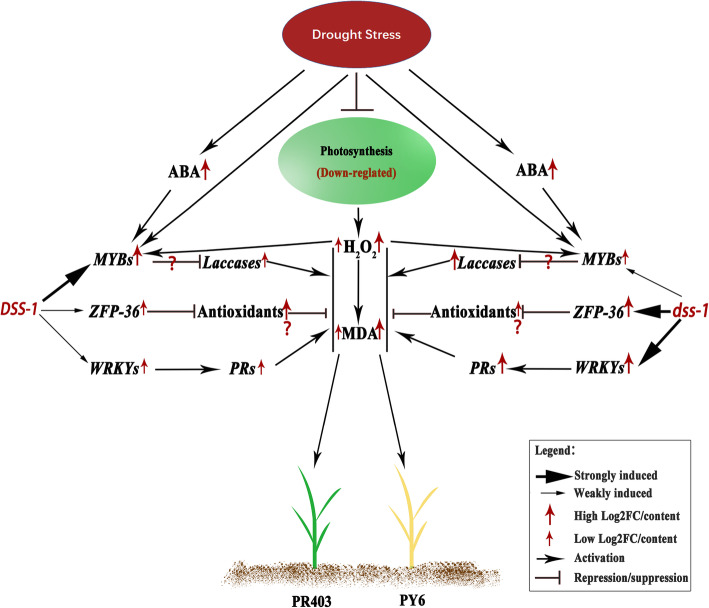Fig. 8.
Possible role of dss-1 in reprogramming the transcriptional profiles of rice in response to drought stress. When rice is exposed to severe drought stress, the inhibition of photosynthesis leads to the overaccumulation of toxic ROS, including H2O2. ABA and H2O2 signals are integrated and perceived and trigger the activation of responsive signaling pathways. First, the transcription factors, MYBs, WRKYs, ZFP36, NACs, etc., was differentially reprogrammed. The downstream responsive genes, including a number of PR family proteins and laccases, are then regulated to respond to drought stress, and ameliorating the drought-induced damage of rice. The introgressed dss-1 may exert its effect on the hub genes and differentially alter their expression, therefore leading to the drought-resistant and -sensitive variation of rice

